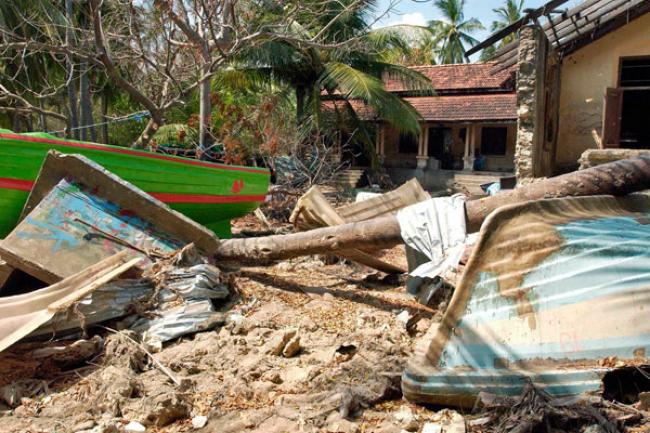19 Dec 2014, 11:24 am Print

Published by the UN Economic and Social Commission for Asia and the Pacific (ESCAP), the annual report showed that disaster-induced deaths in the Asia-Pacific region rose more than three-fold between in the past decade, largely due to a handful of extreme disasters.
“Of the world’s reported natural disasters between 2004 and 2013, 41.2 per cent or 1,690 incidences, occurred in the Asia-Pacific region,” the report showed.
Among the Asia-Pacific sub-regions, Southeast Asia – predominantly Indonesia and the Philippines – was hardest hit by natural disasters that killed more than 350,000 in more than 500 incidents, according to the report. During the same period, the number of natural disasters occurring in China alone was more than twice as high as that in the whole North and Central Asia.
The number of recorded deaths from natural disasters went up from 205,388 between 1994 and 2003 to 713,956 between 2004 and 2013, with 1.5 billion people affected, the report said.
“Indeed, this three-fold increase in the number of deaths was largely attributed to the effects of only a handful of catastrophic disasters, including the 2004 Indian Ocean earthquake and tsunami, the 2005 Kashmir earthquake in Pakistan, the 2008 Sichuan earthquake in China and Cyclone Nargis in Myanmar, as well as the 2010 heatwave in the Russian Federation,” it said.
“During the period between 2004 and 2013, natural disasters in Asia and the Pacific caused economic damage of over $560 billion, of which 85.5 per cent was accounted for by 28 upper-middle-income and high-income economies,” the yearbook said. “Nonetheless, in terms of GDP [Gross Domestic Product], low-income economies suffered more from natural disasters.”
The yearbook also noted that the region continues to drive the global economic recovery, but its growth rate still remains below the 2008 global financial and economic crisis –“that is to say, 3.9 per cent during the period between 2008 and 2012, compared with 5.2 per cent during the period between 2001 and 2007.”
The findings also showed that not all are benefiting from economic growth.
Although one billion people escaped extreme poverty since 1990 in Asia and the Pacific and the prevalence of undernourishment has also decreased from 22 per cent to 13 per cent, more than 700 million people in the region still remain in extreme poverty, the report showed.
Asia and the Pacific accounts for more than 60 per cent of the world’s hungry people with 933 million people living on between $1.25 and $2 a day, it noted.
“A small shock to their lives due to such factors as personal mishaps or economic crises could push these people into abject poverty (below the $1.25-a-day line),” according to a press release on the report. “Inequality has also risen in nearly half the countries in the region for which data are available.”
The Statistical Yearbook for Asia and the Pacific presents analyses highlighting major achievements and challenges for 58 countries in promoting economic prosperity, social inclusion and environmental sustainability. It is accompanied by a series of online products, including country fact sheets, a database containing over 600 indicators and data visualization options.
ESCAP Deputy Executive Secretary Shunichi Murata highlighted the bigger picture for data and statistics in the post-2015 sustainable development agenda (SDG).
“The proposed 17 goals with 169 targets of the framework cover a broad range of goals and targets of sustainable development, raising demands for data for the purpose of monitoring,” he was quoted in the press release as saying.
“At the same time, there has been an emphasis on the importance of establishing a rigorous monitoring and accountability system. In that context, statistics will be of critical importance to support accountability and monitoring of the SDGs.”
A view of the destruction caused by the Indian Ocean tsunami of 26 December 2004 in Point Pedro, a small fishing village in northern Sri Lanka. UN Photo/Evan Schneider
- UN officials launch global campaign to combat climate emergency
- Asia hit hardest by climate change and extreme weather, says WMO report
- Taiwan rocked by 93 aftershocks, strongest touches 6.3 magnitude
- World Meteorological Organization data alerts heatwave deaths increased in Europe in 2023
- Google marks World Earth Day, creates unique doodle which gives a strong message to people






